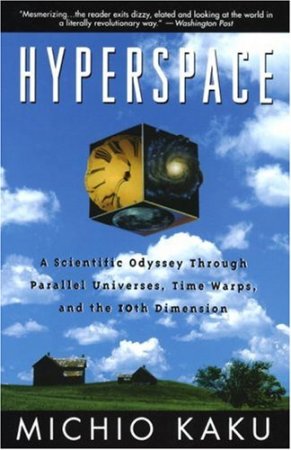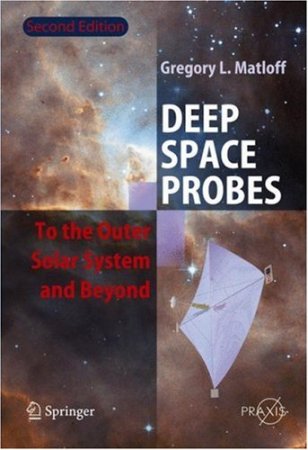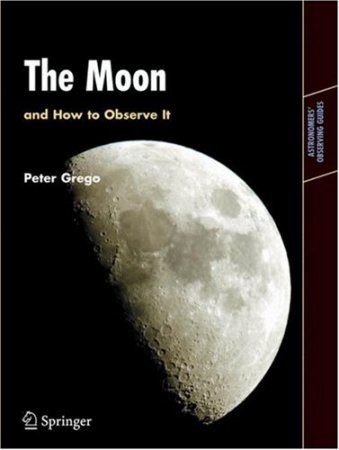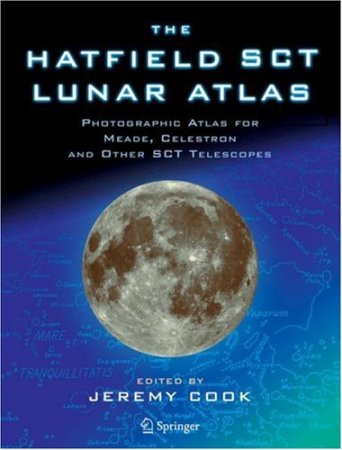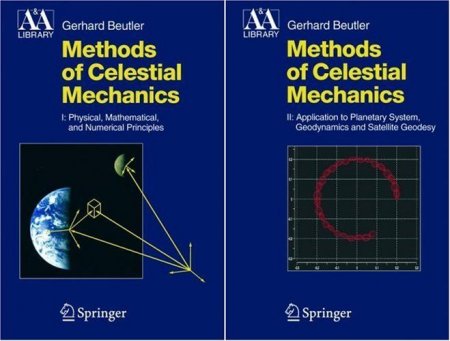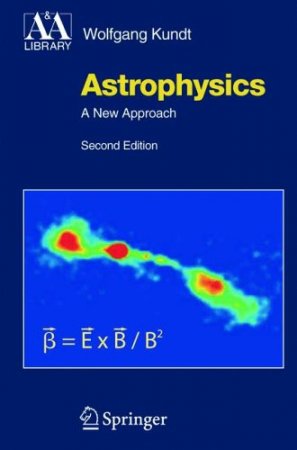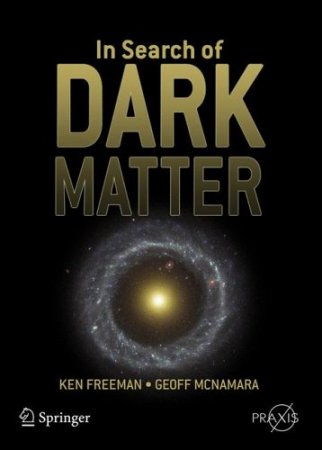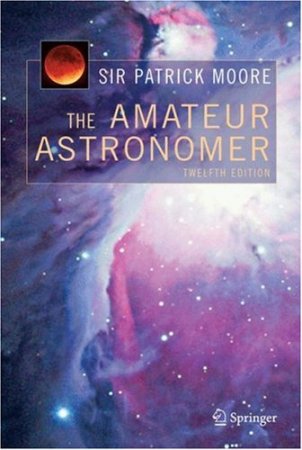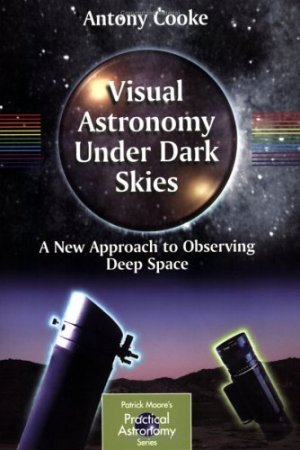НавигацияАрхив новостейСтатистика |
Hyperspace: A Scientific Odyssey Through Parallel Universes, Time Warps, and the 10th DimensionHow many dimensions do you live in? Three? Maybe that's all your commonsense sense perception perceives, but there is growing and compelling evidence to suggest that we actually live in a universe of ten real dimensions. Kaku has written an extraordinarily lucid and thought-provoking exploration of the theoretical and empirical bases of a ten-dimensional universe and even goes so far as to discuss possible practical implications - such as being able to escape the collapse of the universe. Deep Space Probes: To the Outer Solar System and BeyondThe Space Age is nearly 50 years old but exploration of the outer planets and beyond has only just begun. Deep-Space Probes Second Edition draws on the latest research to explain why we should explore beyond the edge of the Solar System and how we can build highly sophisticated robot spacecraft to make the journey. Many technical problems remain to be solved, among them propulsion systems to permit far higher velocities, and technologies to build vehicles a fraction of the size of today's spacecraft. The Moon and How to Observe ItThis revolutionary new book is written for practical amateur astronomers who not only want to observe, but want to know the details of exactly what they are looking at. The Moon is the most commonly observed of all astronomical objects. This is the first book to deal equally with the Moon itself - its formation, geology, and history - as well as the practical aspects of observation. The concept of the book - and of the series - is to present an up-to-date detailed description of the Moon, including its origins, history, and geology (part one); and then (part two) to consider how best to observe and record it successfully using commercially-available equipment. The Moon and How to Observe It is a mine of information for all levels of amateur observers, from the beginner to the experienced. Einstein's Enigma or Black Holes in My Bubble BathEinstein's Enigma or Black Holes in My Bubble Bath is a humourous and informal rendition of the story of gravitation theory from the early historic origins to the latest developments in astrophysics, focusing on Albert Einstein's theory of general relativity and black-hole physics. Through engaging conversations and napkin-scribbled diagrams come tumbling the rudiments of relativity, spacetime and much of modern physics, narrated with high didactic and literary talent, and each embedded in casual lessons given by a worldly astrophysicist to his friend. Join the intellectual fun and exalt in the frothy ideas while vicariously taking relaxing baths in this magical bathtub. The Hatfield SCT Lunar Atlas: Photographic Atlas for Meade, Celestron and other SCT TelescopesSCT and Maksutov telescopes - which of course includes the best-selling models from Meade, Celestron, and other important manufacturers - reverse the visual image left for right. It is extremely difficult to identify lunar features at the eyepiece of one of these instruments using a conventional atlas. The human brain just doesn’t cope well with trying to compare the real thing with a map that is a mirror-image of it. This new SCT version of Hatfield’s famous lunar atlas solves the problem. Photographs and key maps in The Hatfield SCT Lunar Atlas are mirror-images, to show the Moon exactly as it appears through the eyepiece of an SCT or Maksutov telescope. Identification of lunar features is made quick and easy. The Moon’s surface is shown for various sun angles, and there are inset keys that show the effects of optical libration - all mirror-imaged for SCT users. Smaller IAU-standard reference images are included, to make it simple to compare the mirrored SCT photographs and maps with those that appear in other atlases. This edition still uses the superb original photographs taken by Commander Henry Hatfield using his 12-inch reflector. The key maps, on which lunar features can be readily identified, have been reversed and updated, but retain the style and clarity that made the original justly famous. Methods of Celestial Mechanics: Volumes I & IIG. Beutler's Methods of Celestial Mechanics is a coherent textbook for students as well as an excellent reference for practitioners. The first volume gives a thorough treatment of celestial mechanics and presents all the necessary mathematical details that a professional would need. The reader will appreciate the well-written chapters on numerical solution techniques for ordinary differential equations, as well as that on orbit determination. In the second volume applications to the rotation of earth and moon, to artificial earth satellites and to the planetary system are presented. The author addresses all aspects that are of importance in high-tech applications, such as the detailed gravitational fields of all planets and the earth, the oblateness of the earth, the radiation pressure and the atmospheric drag. The concluding part of this monumental treatise explains and details state-of-the-art professional and thoroughly-tested software for celestial mechanics. Astrophysics: A New ApproachFor a quantitative understanding of the physics of the universe - from the solar system through the milky way to clusters of galaxies all the way to cosmology - these edited lecture notes are perhaps among the most concise and also among the most critical ones: Astrophysics has not yet stood the redundancy test of laboratory physics, hence should be wary of early interpretations. Special chapters are devoted to magnetic and radiation processes, supernovae, disks, black-hole candidacy, bipolar flows, cosmic rays, gamma-ray bursts, image distortions, and special sources. At the same time, planet earth is viewed as the arena for life, with plants and animals having evolved to homo sapience during cosmic time. In Search of Dark MatterThe dark matter problem is one of the most fundamental and profoundly difficult to solve problems in the history of science. Not knowing what makes up most of the known universe goes to the heart of our understanding of the Universe and our place in it. In Search of Dark Matter is the story of the emergence of the dark matter problem, from the initial erroneous ‘discovery’ of dark matter by Jan Oort to contemporary explanations for the nature of dark matter and its role in the origin and evolution of the Universe. The Amateur AstronomerThis 2000 Edition of Sir Patrick Moore’s classic book has been completely revised in the light of changes in technology. Not only do these changes include commercially available astronomical telescopes and software, but also what we know and understand about the universe. There are many new photographs and illustrations. Writing in the easy-going style that made him famous as a writer and broadcaster, Sir Patrick introduced astronomy and amateur observing together, so that his reader gets an idea of what he is observing at the same time as how to observe. Almost half the book is Appendices. These are hugely comprehensive and provide hints and tips, as well as data (year 2000 onwards) for pretty well every aspect of amateur astronomy. This is probably the only book in which all this information is collected in one place. Visual Astronomy Under Dark Skies: A New Approach to Observing Deep SpaceModern astronomical telescopes, along with other advances in technology, have brought the deep sky – star clusters, nebulae and the galaxies – within reach of amateur astronomers. And it isn’t even necessary to image many of these deep-sky objects in order to see them; they are within reach of visual observers using modern techniques and enhancement technology. The first requirement is truly dark skies; if you are observing from a light-polluted environment you need Tony Cooke’s book, Visual Astronomy in the Suburbs. Given a site with clear, dark night skies everything else follows… this book will provide the reader with everything he needs to know about what to observe, and using some of today’s state-of-the-art technique and commercial equipment, how to get superb views of faint and distant astronomical objects. |
ПопулярноеКалендарь
ОпросОцените дизайн сайта
Немного рекламы |
|||||||||||||||||||||||||||||||||||||||||||||||||
